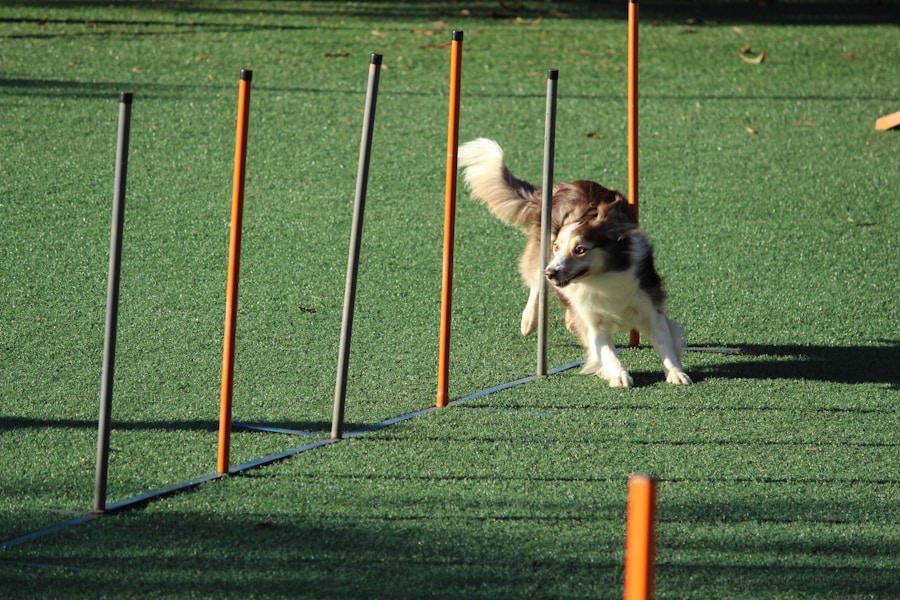Dog training is an essential aspect of responsible pet ownership. It not only helps to ensure the safety and well-being of your dog, but also enhances the bond between you and your furry companion. Training provides mental stimulation for your dog, which is crucial for their overall happiness and behavior. It also helps to prevent behavioral issues such as aggression, anxiety, and destructive tendencies. Additionally, a well-trained dog is more likely to be welcomed in public spaces and social gatherings, making your life as a pet owner much easier. Whether you have a new puppy or an older dog, investing time and effort into training is a worthwhile endeavor that will benefit both you and your canine friend for years to come.
Furthermore, dog training is not just about teaching basic commands like sit, stay, and come. It also involves teaching your dog how to behave appropriately in various situations, such as walking on a leash, greeting strangers, and interacting with other animals. Training can also help address specific behavioral issues that your dog may have, such as excessive barking, jumping, or separation anxiety. By understanding the importance of dog training, you can make informed decisions about the type of training that will best suit your dog’s needs and your lifestyle.
Researching Local Dog Training Courses
When it comes to finding the right dog training course for your pet, it’s important to do thorough research to ensure that you are making the best choice for your furry friend. Start by asking for recommendations from friends, family, or your veterinarian. You can also search online for local dog trainers and training facilities in your area. Look for trainers who have experience working with dogs of all ages and breeds, and who use positive reinforcement techniques rather than harsh punishment.
Once you have a list of potential trainers or training facilities, take the time to read reviews and testimonials from previous clients. This will give you insight into the quality of their services and the results they have achieved with other dogs. Additionally, consider visiting the training facilities in person to get a feel for the environment and observe how the trainers interact with the dogs. This will help you determine if the training methods and philosophies align with your own beliefs and goals for your dog.
Evaluating Training Methods and Philosophies
When evaluating dog training methods and philosophies, it’s important to consider what will work best for your individual dog. Positive reinforcement techniques, such as using treats, praise, and toys to reward good behavior, are generally considered to be the most effective and humane approach to training. These methods focus on building a strong bond between you and your dog, while also teaching them to make good choices on their own.
On the other hand, aversive training methods that rely on punishment or intimidation can have negative effects on your dog’s behavior and well-being. These methods can lead to fear, anxiety, and even aggression in some dogs. It’s crucial to choose a trainer who prioritizes positive reinforcement and uses gentle, force-free techniques to help your dog learn and grow. By understanding and evaluating different training methods and philosophies, you can make an informed decision about the type of training that will be most beneficial for your furry friend.
Considering Your Dog’s Specific Needs
Every dog is unique, with their own personality, temperament, and learning style. When considering dog training, it’s important to take into account your dog’s specific needs and characteristics. For example, a high-energy breed like a Border Collie may require more mental stimulation and physical exercise than a laid-back breed like a Basset Hound. Similarly, a shy or fearful dog may need extra patience and gentle encouragement during training sessions.
It’s also important to consider any behavioral issues or challenges that your dog may have, such as separation anxiety, leash reactivity, or fear of strangers. These factors will influence the type of training that will be most effective for your dog. By taking the time to understand your dog’s specific needs, you can tailor their training program to address their individual strengths and weaknesses.
Meeting with Trainers and Visiting Facilities
Once you have narrowed down your list of potential trainers or training facilities, it’s important to schedule meetings or consultations with them to discuss your dog’s needs and goals. This will give you the opportunity to ask questions about their training methods, experience, and approach to working with dogs. It’s also a chance for you to observe how they interact with your dog and assess their communication skills.
During these meetings, pay attention to how the trainer engages with your dog and whether they are able to build a positive rapport with them. Look for a trainer who is patient, compassionate, and able to adapt their approach to suit your dog’s individual needs. Additionally, take the time to tour the training facilities and ensure that they are clean, safe, and well-equipped for training sessions. By meeting with trainers and visiting facilities in person, you can make an informed decision about the best fit for your furry friend.
Budgeting for Dog Training Costs
When budgeting for dog training costs, it’s important to consider the long-term investment in your dog’s well-being and behavior. The cost of dog training can vary depending on factors such as the trainer’s experience, the type of training program, and the duration of the sessions. While it may be tempting to opt for the cheapest option, it’s crucial to prioritize quality and effectiveness when choosing a trainer for your dog.
Keep in mind that investing in professional training now can save you time and money in the long run by preventing behavioral issues and promoting a harmonious relationship with your dog. Additionally, consider the potential savings from avoiding costly damage to your home or belongings caused by destructive behavior. By budgeting for dog training costs as a worthwhile investment in your pet’s future, you can make informed decisions about the type of training program that will best suit your budget and your dog’s needs.
Committing to Ongoing Training and Support
Finally, it’s important to commit to ongoing training and support for your dog even after completing a formal training program. Dogs are constantly learning and evolving, so it’s essential to continue reinforcing good behavior and practicing obedience commands on a regular basis. This will help maintain the skills that your dog has learned and prevent regression in their behavior.
Additionally, ongoing training provides mental stimulation for your dog and strengthens the bond between you as their trusted leader. Consider enrolling in advanced training classes or participating in canine sports such as agility or obedience trials to keep your dog engaged and challenged. Furthermore, seek out support from trainers or behaviorists if you encounter new challenges or changes in your dog’s behavior. By committing to ongoing training and support, you can ensure that your furry friend continues to thrive and grow throughout their life.
In conclusion, understanding the importance of dog training is crucial for responsible pet ownership. By researching local dog training courses, evaluating training methods and philosophies, considering your dog’s specific needs, meeting with trainers and visiting facilities, budgeting for dog training costs, and committing to ongoing training and support, you can make informed decisions about the best approach to training for your furry friend. Investing time and effort into training will not only benefit your dog’s behavior and well-being but also enhance the bond between you as their trusted companion. With patience, consistency, and positive reinforcement techniques, you can help your dog become a well-behaved and happy member of your family for years to come.






Внимание, если авто mailsco.online новости. Это важно для определения.
go to the website https://jaxx-wallet.com/
prednisone back pain is prednisone safe for cats prednisone and asthma prednisone for gout treatment zostavax and prednisone
see here https://sollet-wallet.io
look at here https://jaxx-wallet.com
Если у вас есть планы готовите поездку и решаете направление, нужно взглянуть на маршруты от основных транспортных узлов, таких как Ленинградский вокзал метро или Вокзал Восточный. В качестве примера, из Москвы удастся отправиться в такие города, как Ивантеевка, Химки или Зеленоград, а также добраться до Калининграда через Зеленоградск. Также распространены поездки между Москвой и Тулой, Рязанью или Домодедово-городом.
Для международных зарубежных поездок среди часто обсуждаемых направлений – Италия, Швейцария, Хорватия, Словакия и Польша, а также Испания. Если привлекают более экзотические маршруты, целесообразно обдумать поездку в Гуниб или Байкальск. Для упрощения поиска информации о расписании и билетах предлагаю заглянуть на сайт домодедово город , где собрана полная информация по ж/д вокзалам и направлениям.